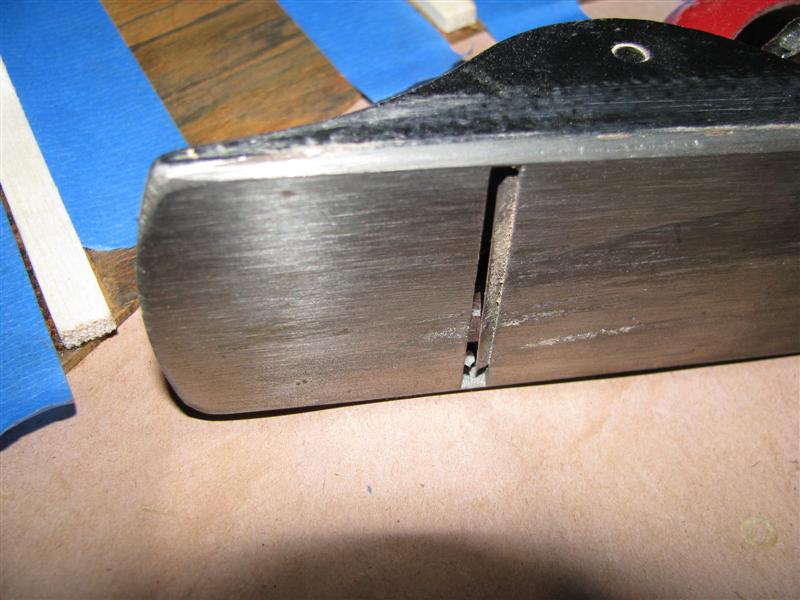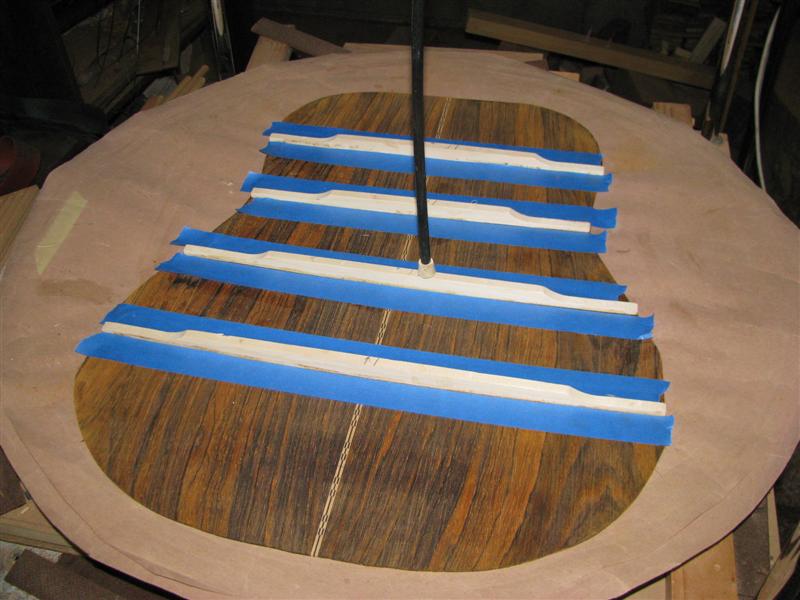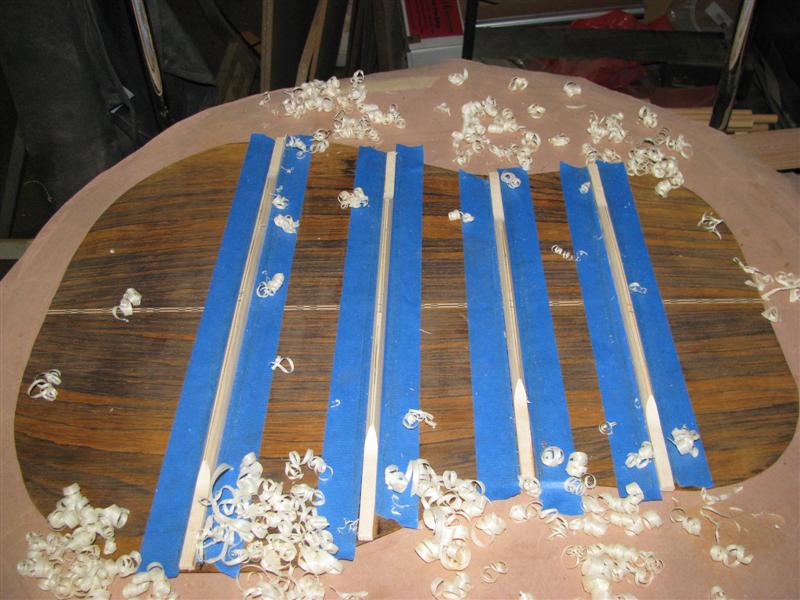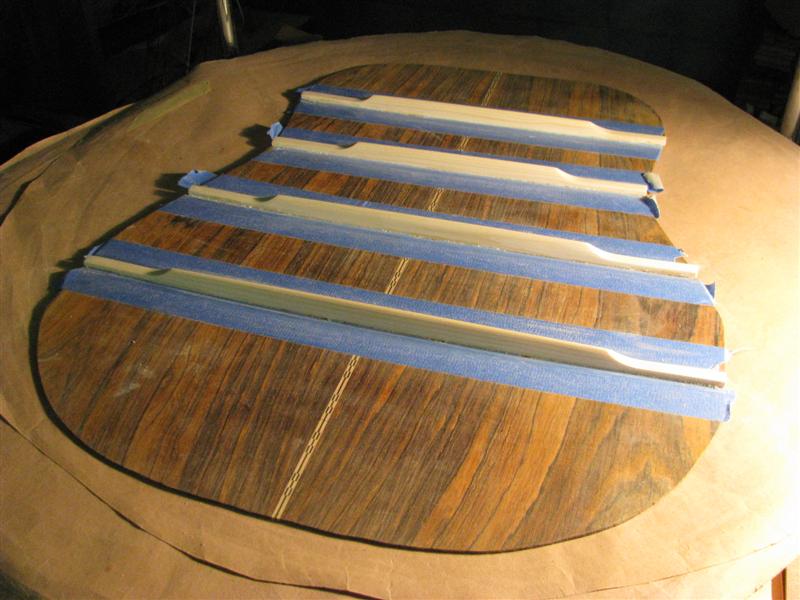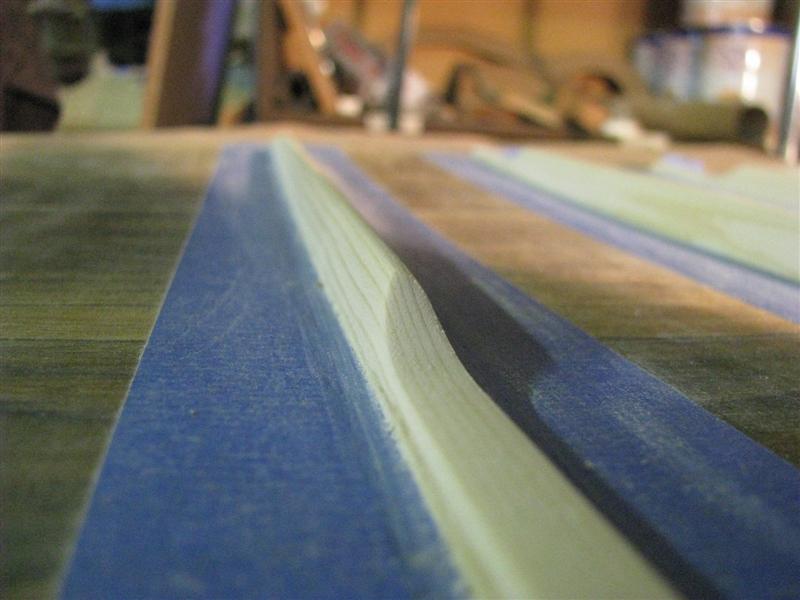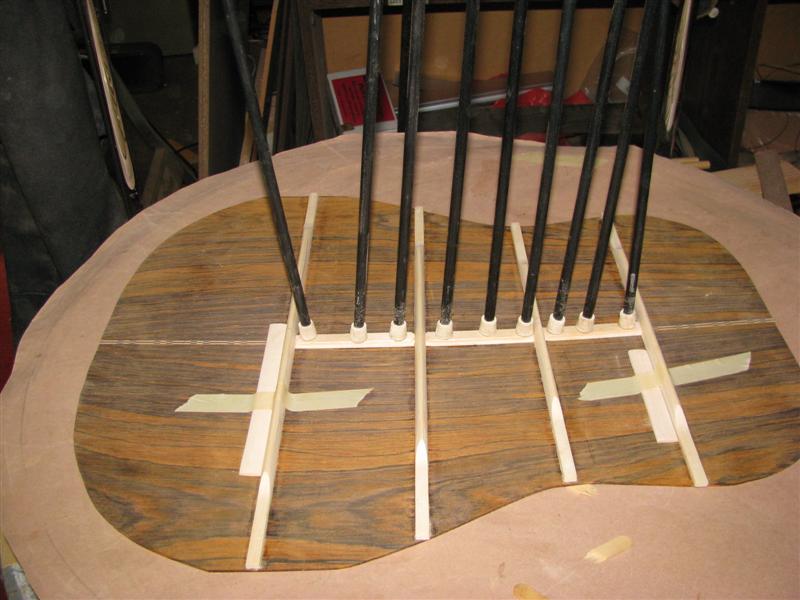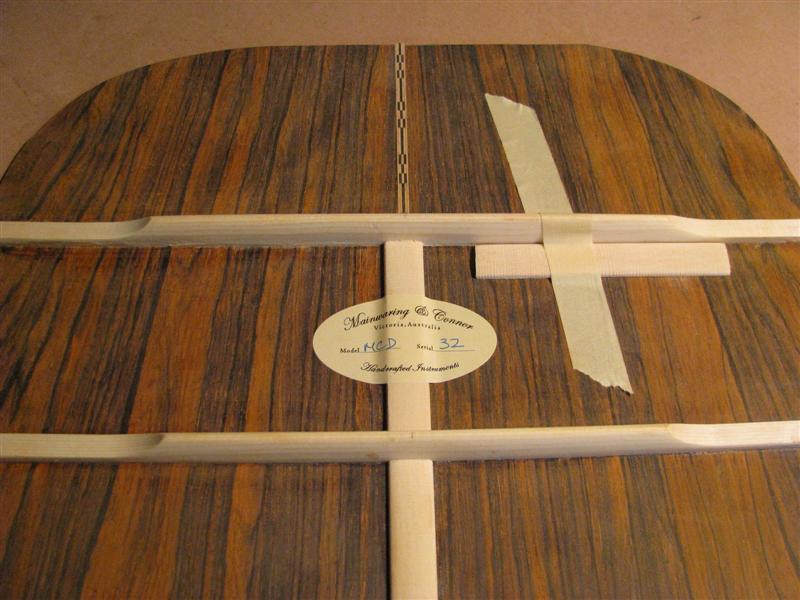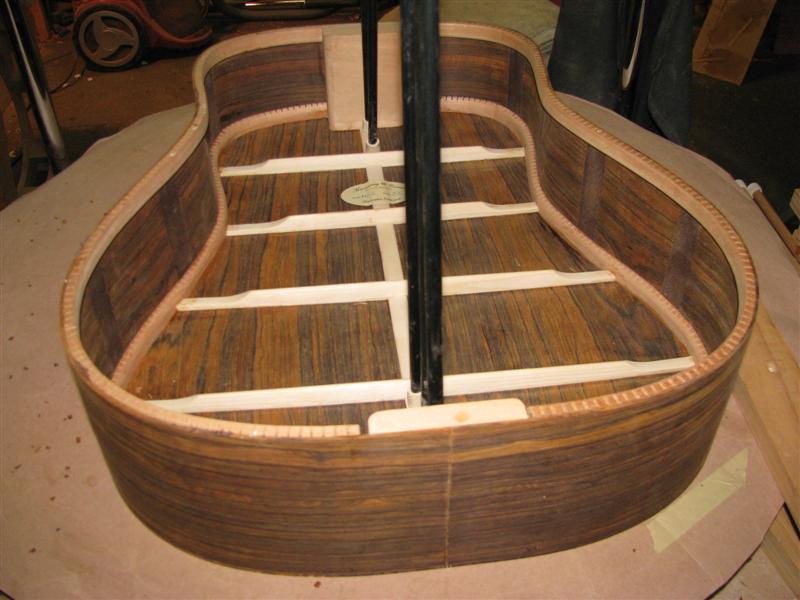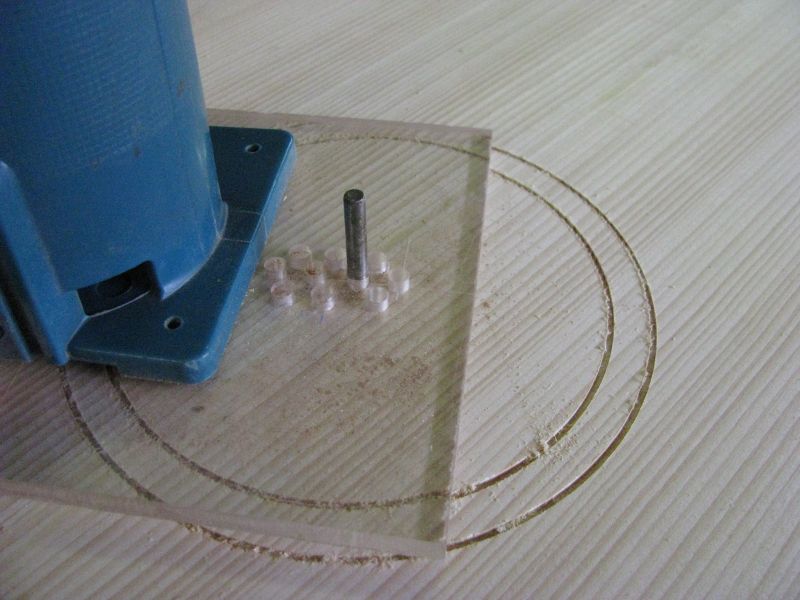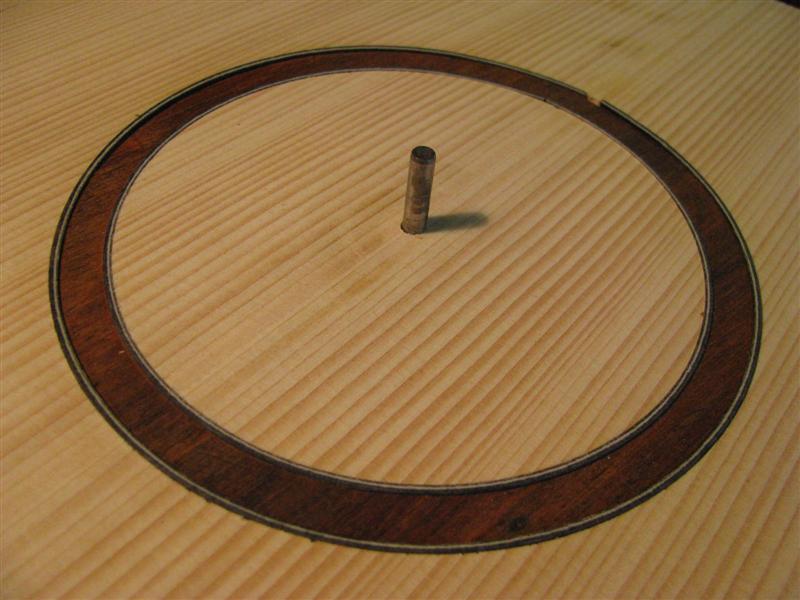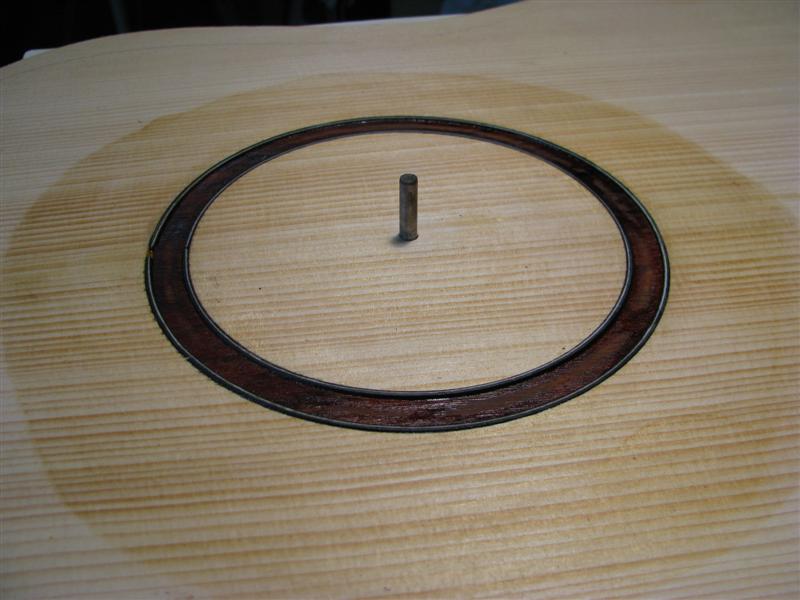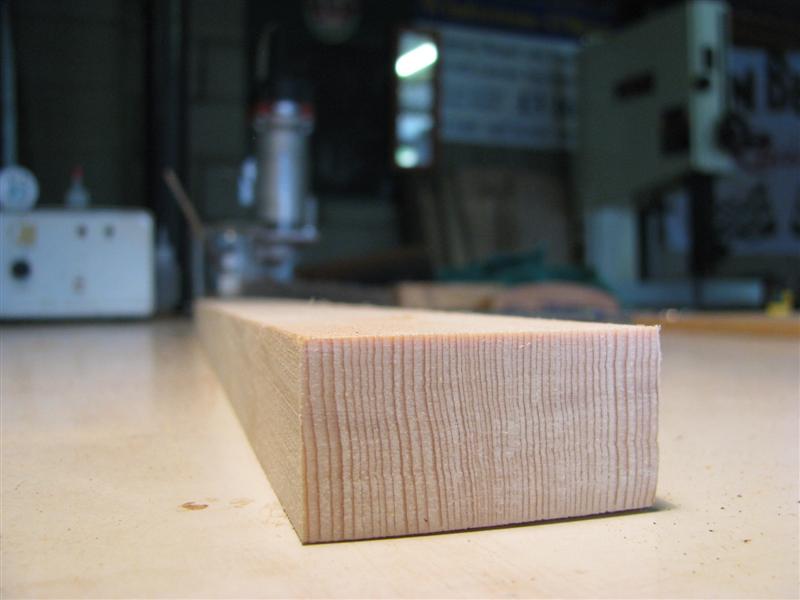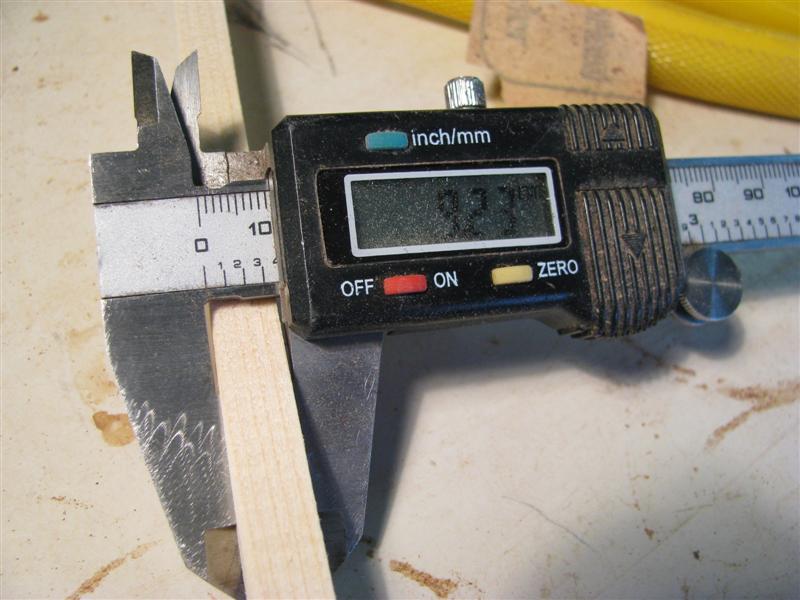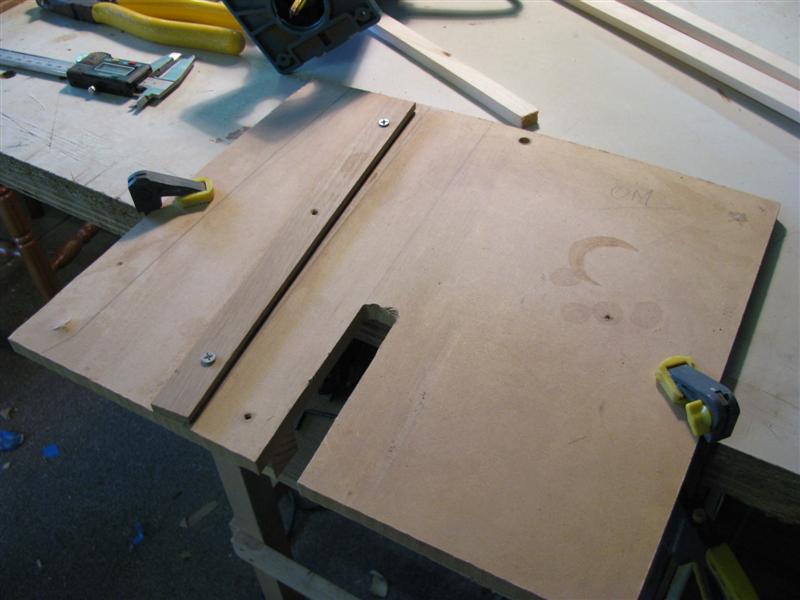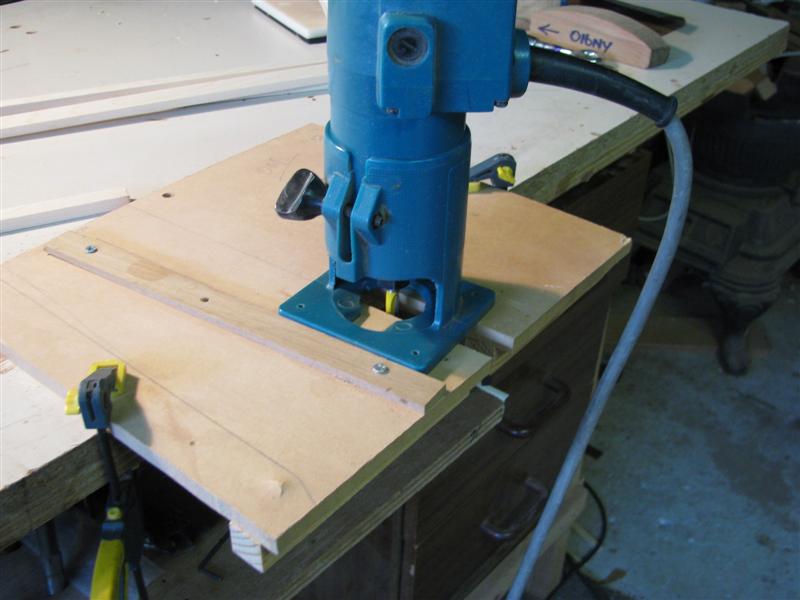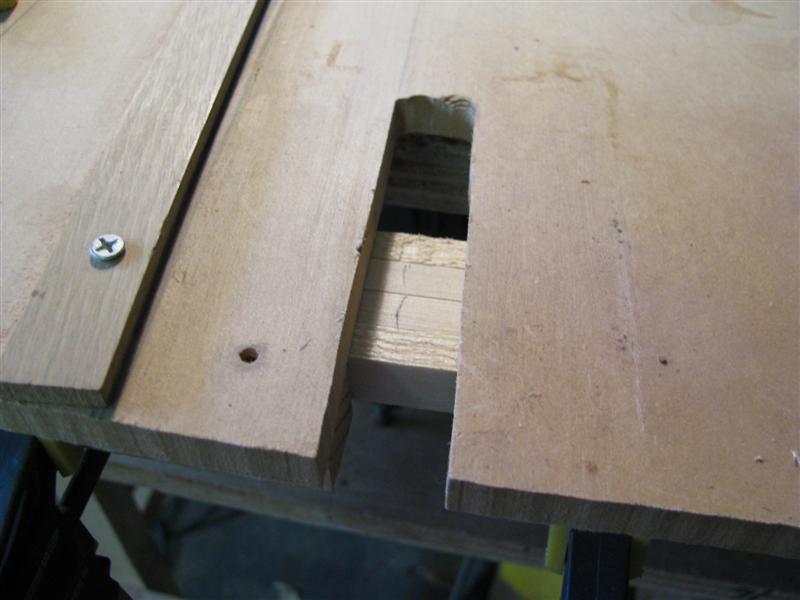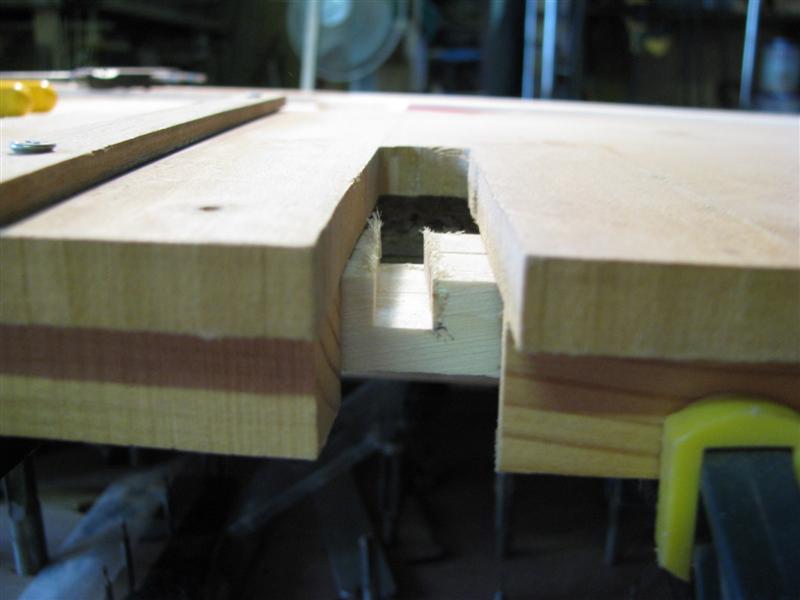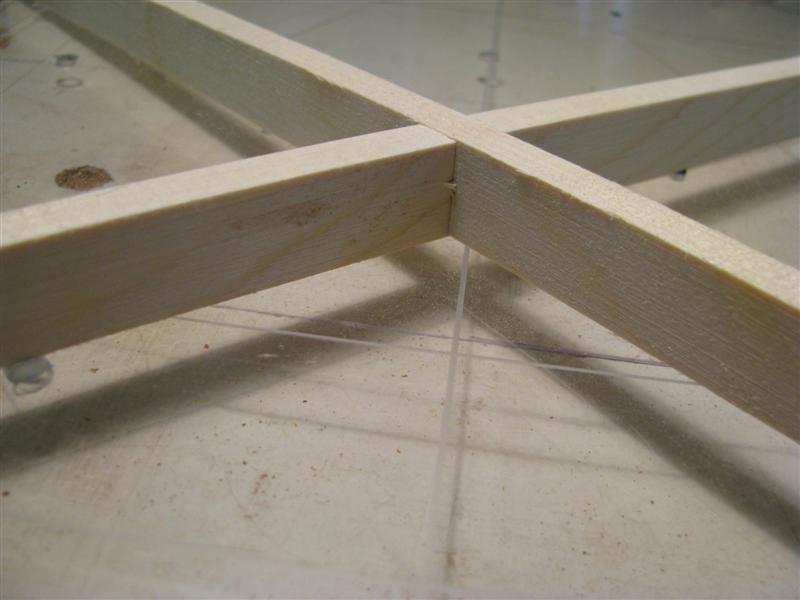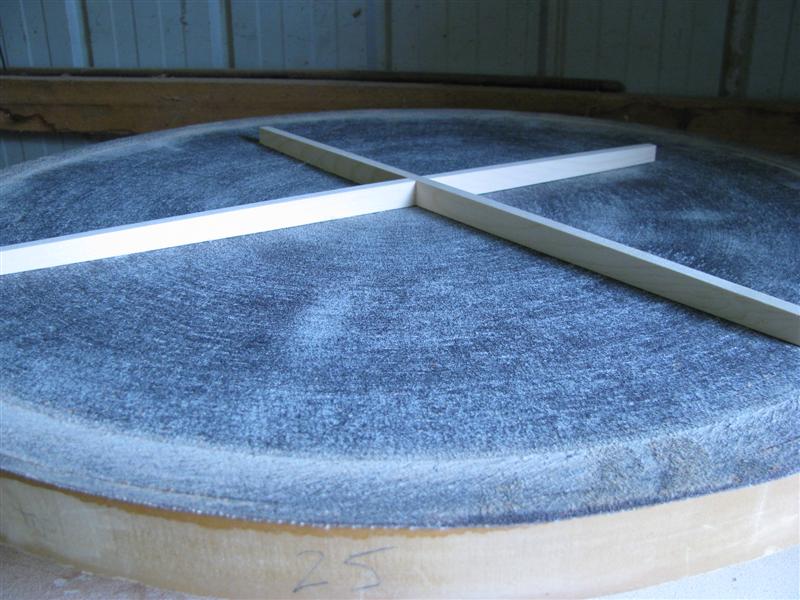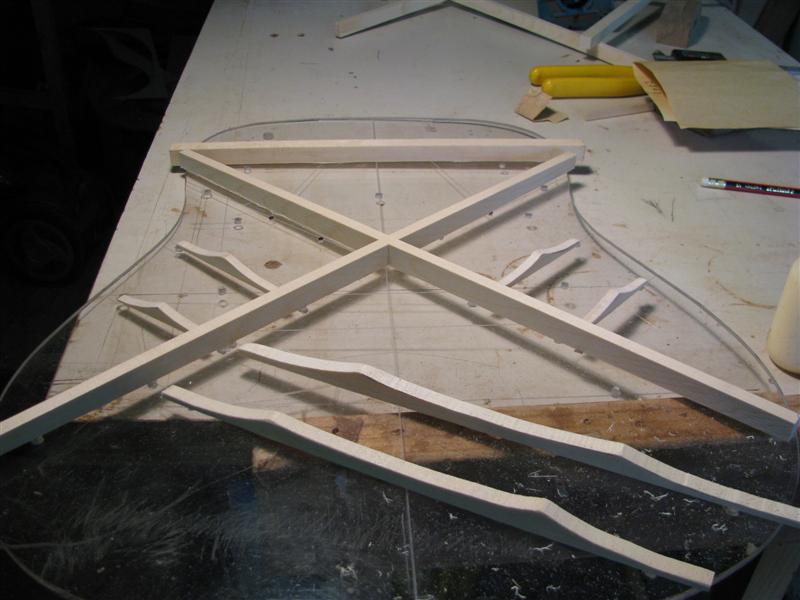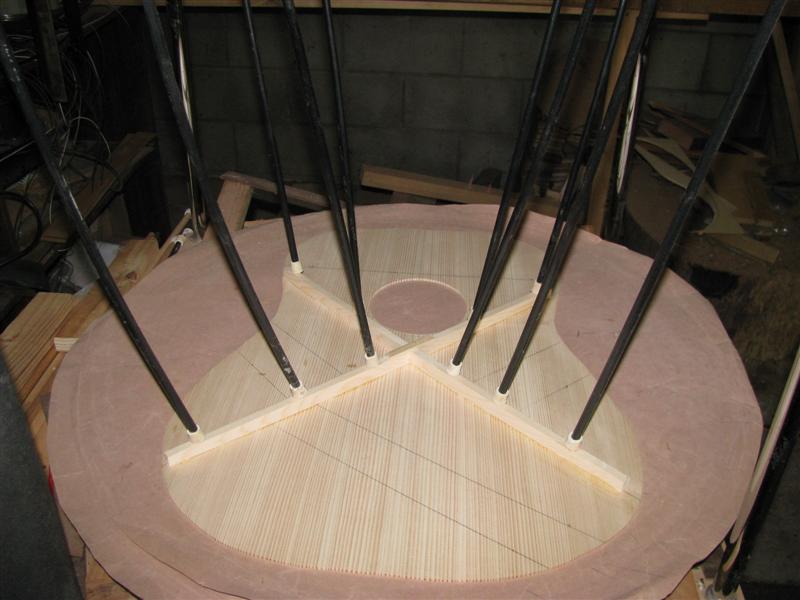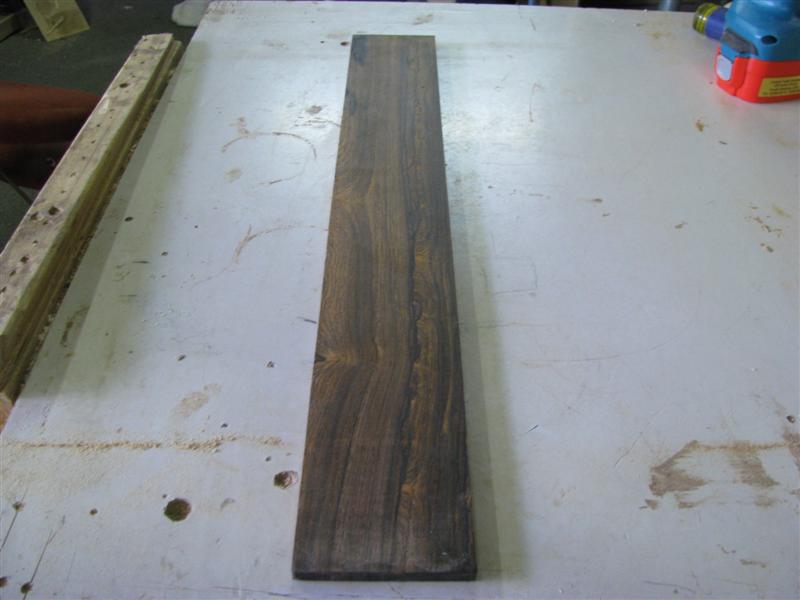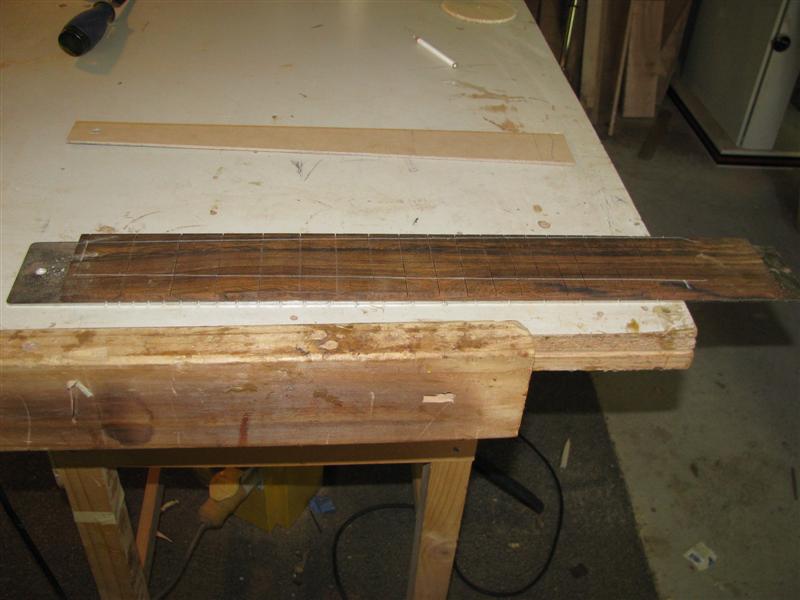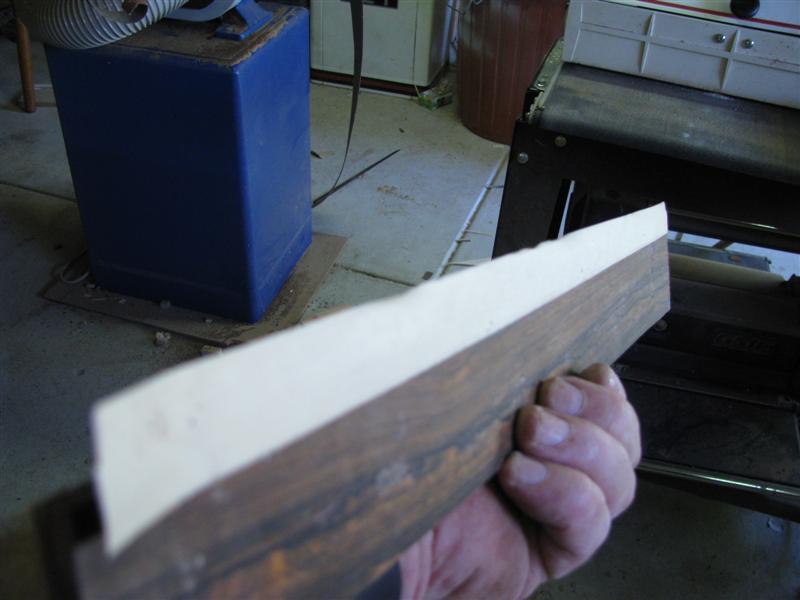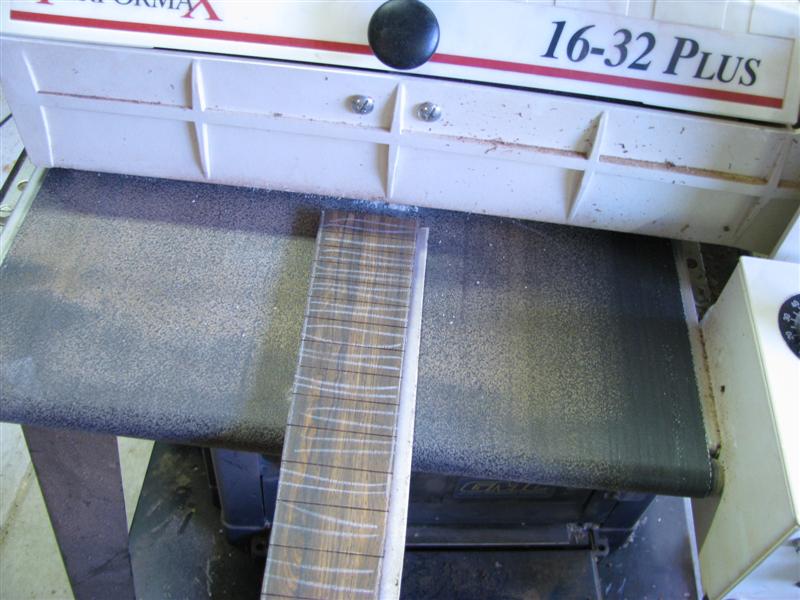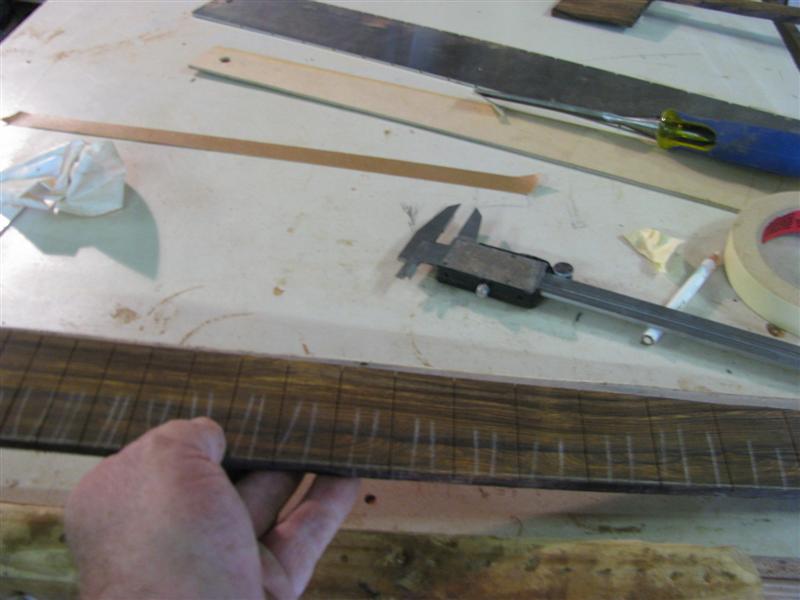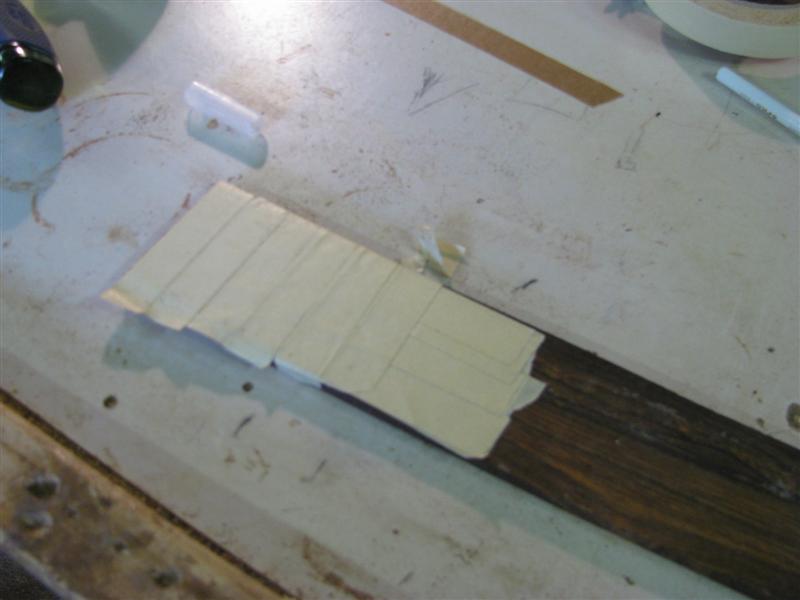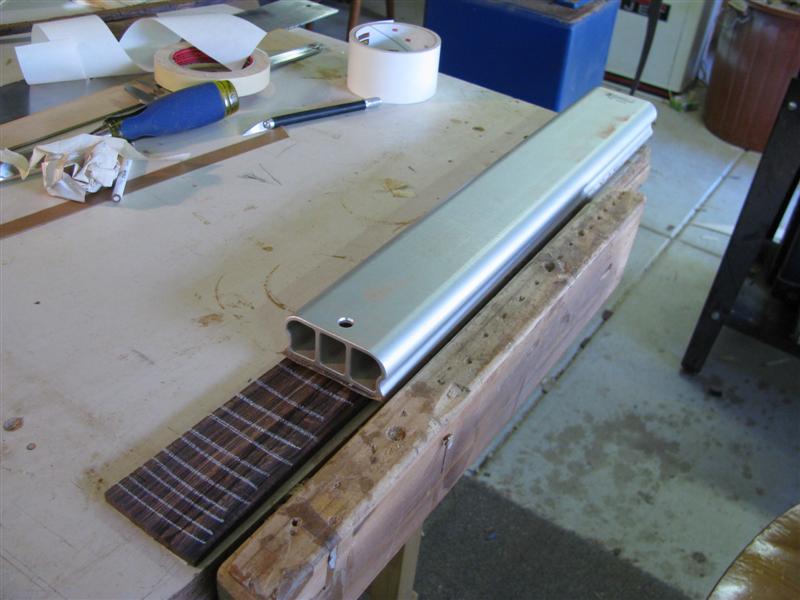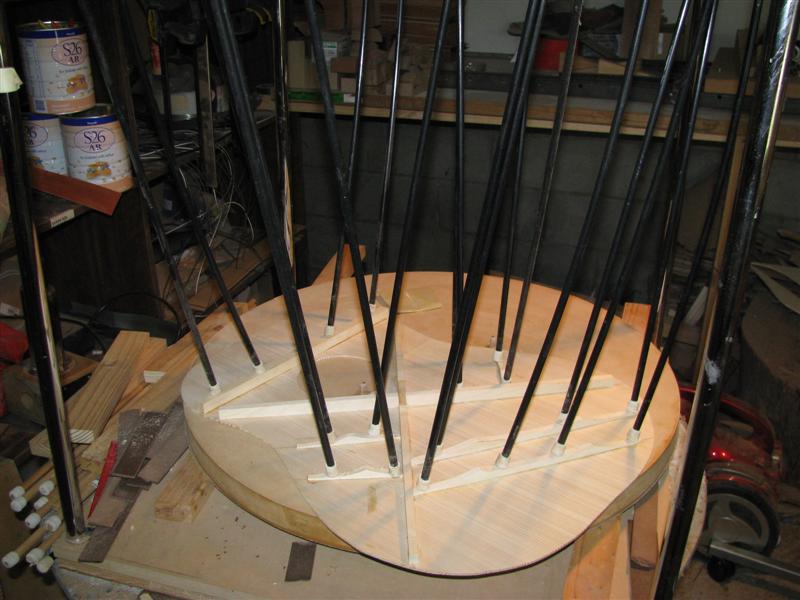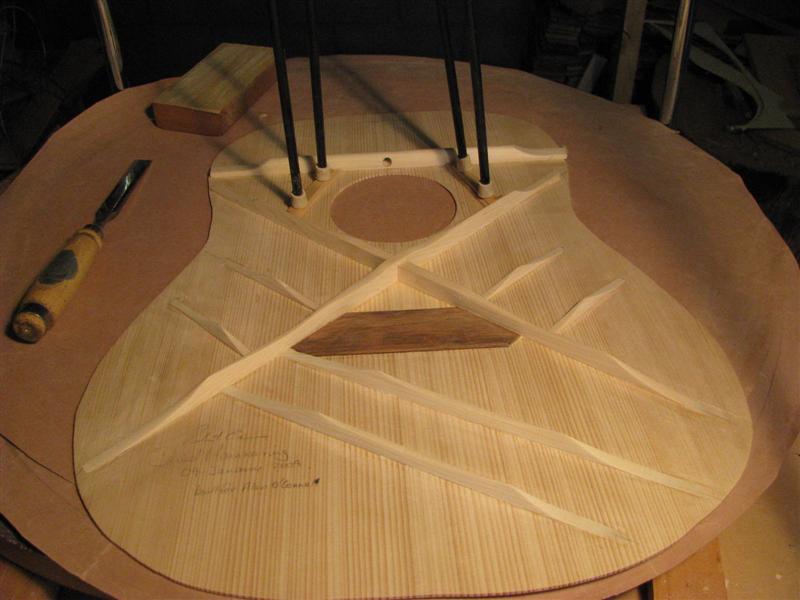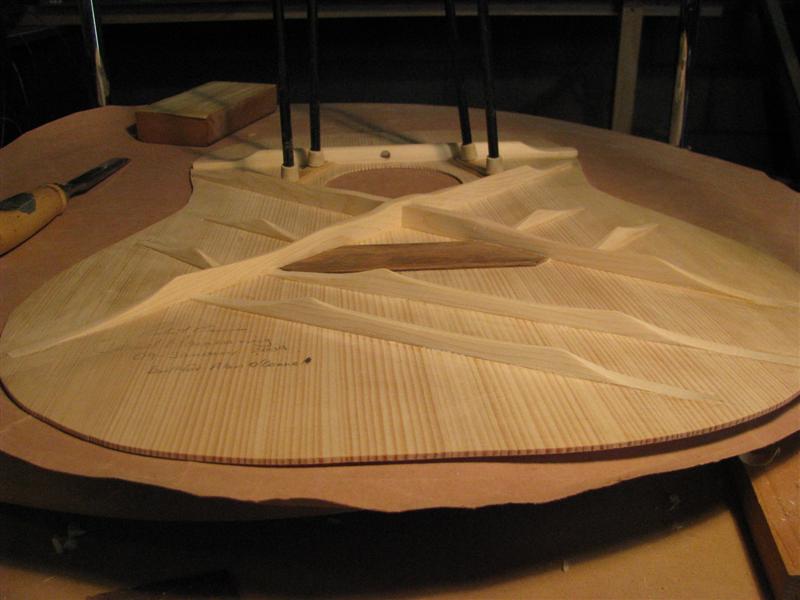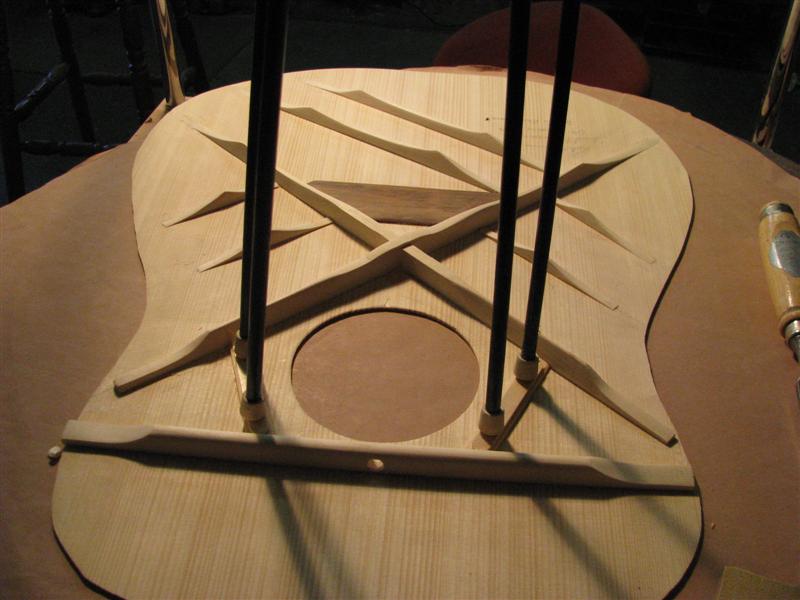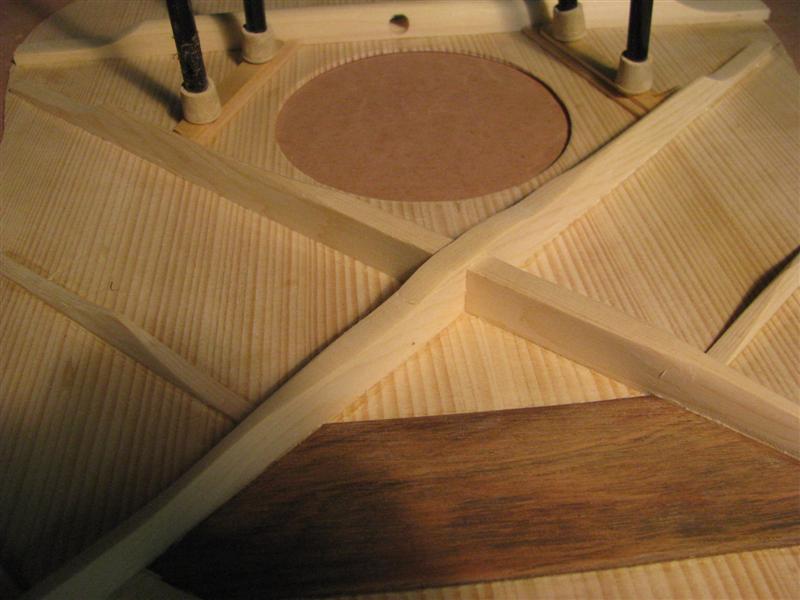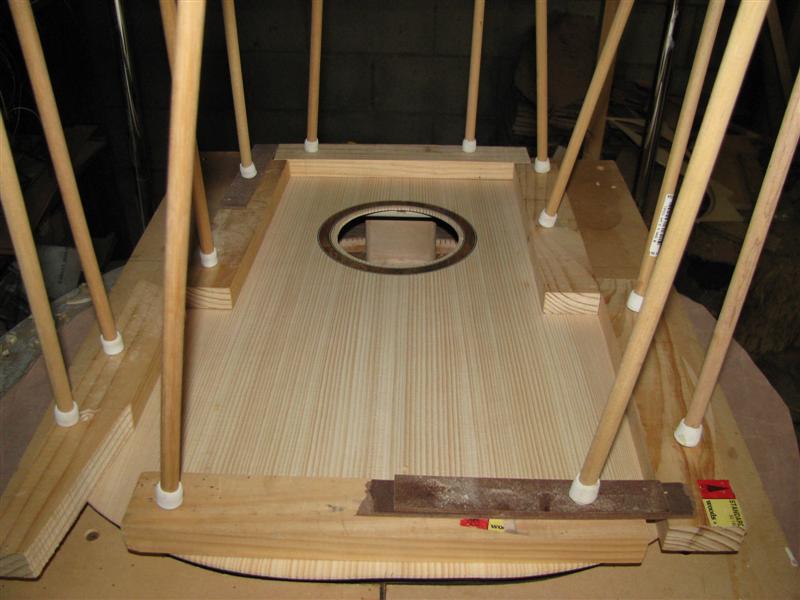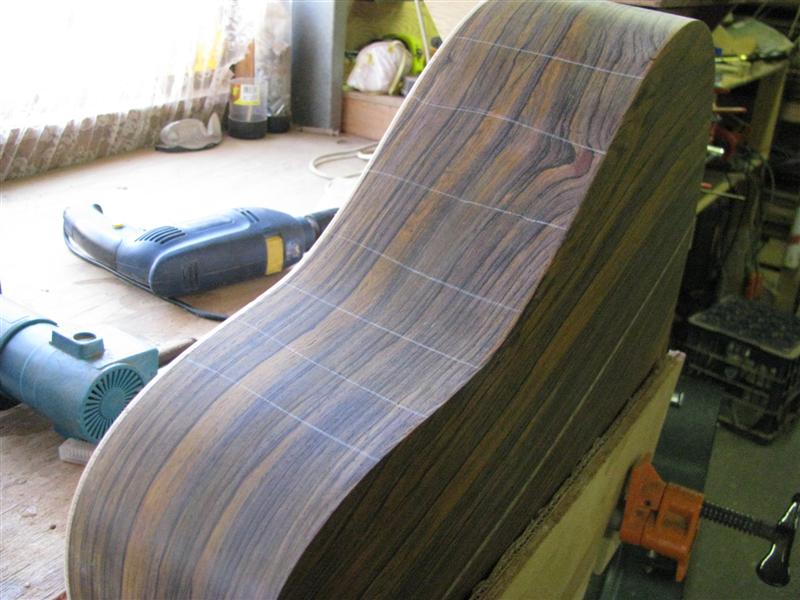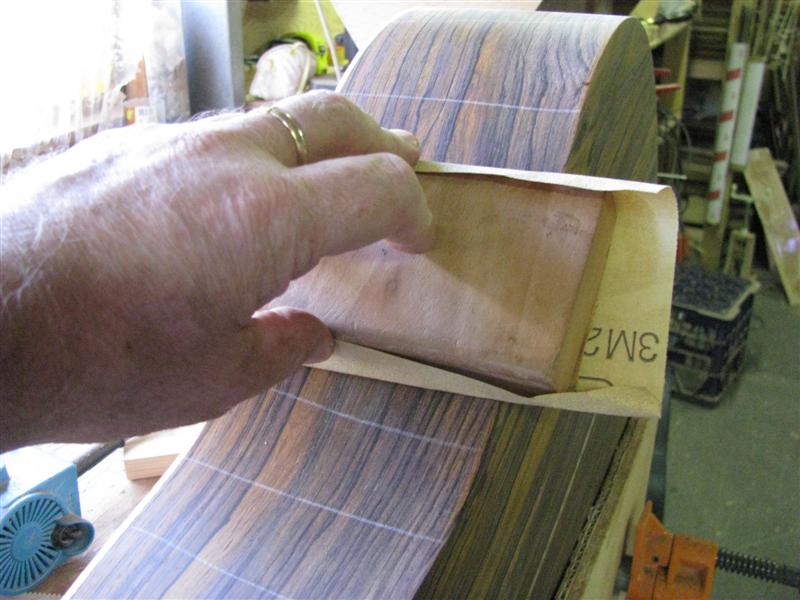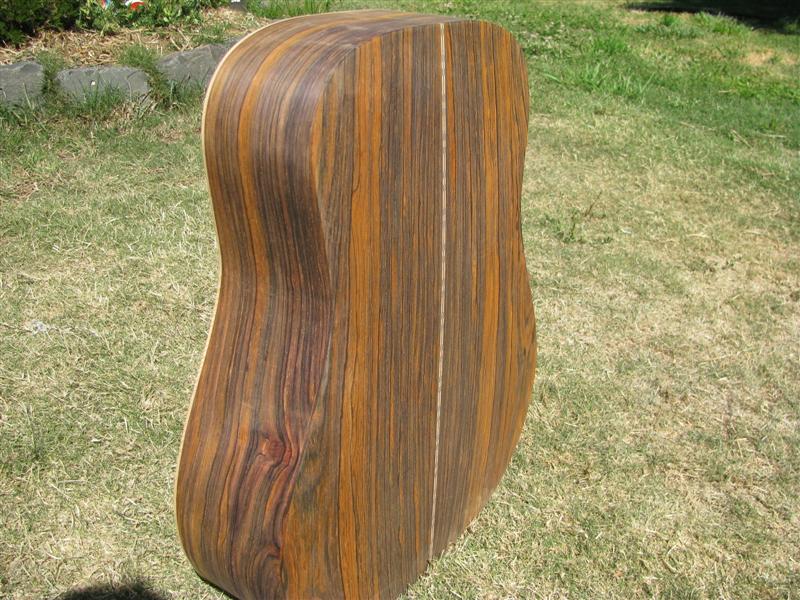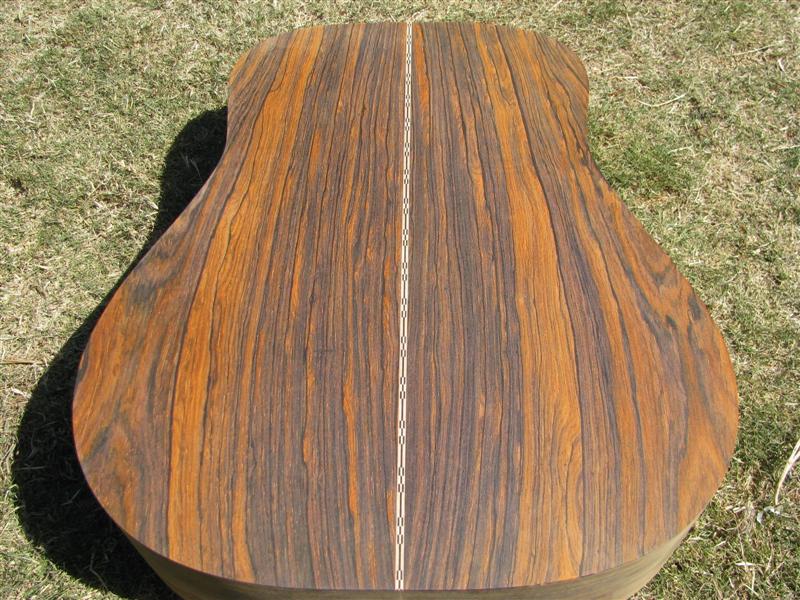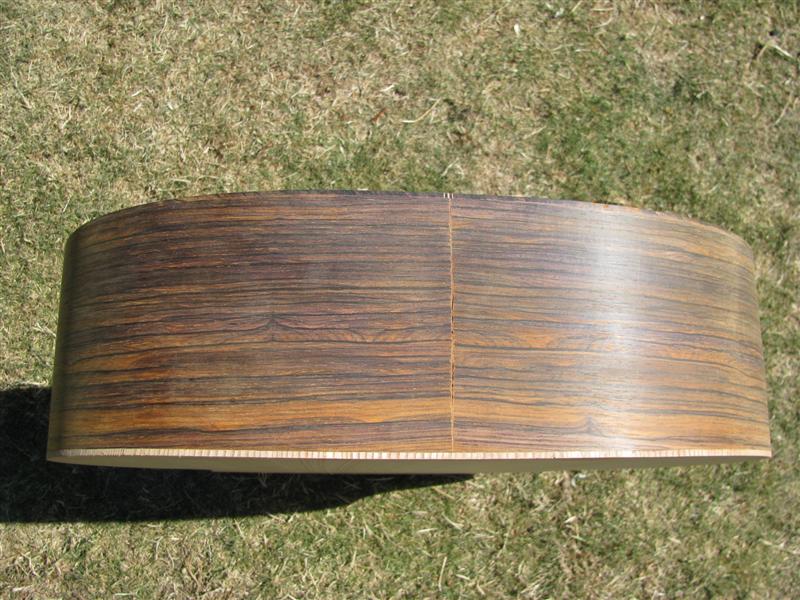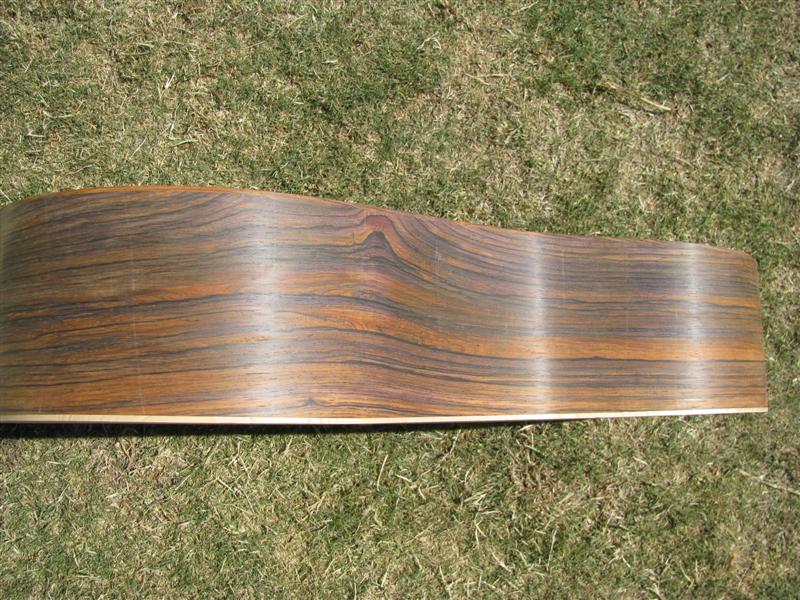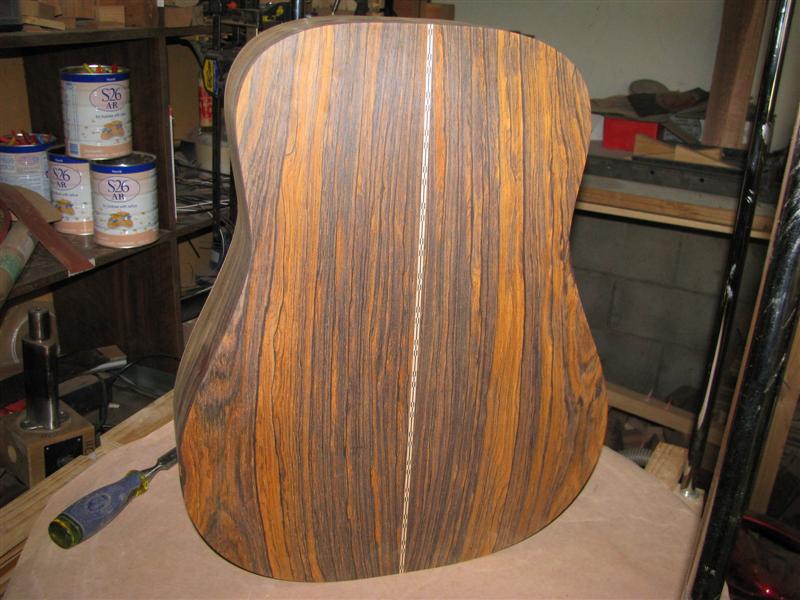Things have been on the backburner for the last couple of weeks.
I spent a week in Tasmania getting more wood and got back into this last weekend.
The binding channels were cut before I went to Tassie.
I use the StewMac Tru Channel binding jig with the StewMac router bit set.
Two gripes I have about this set up are:
The donut is not quite wide enough if you wantt to cut a wide purfling channel first (herringbone, for instance) and the router bit guide is not quite deep enough if you want to install reasonably deep bindings.
Other than that if you are aware of the limitations it works reasonably well.
This Dread is getting Ebony bindings with a BWB purfling scheme and Herringbone on the top.
I bend the binding and the side purflings in the bender before installation.
I do the same with the Herringbone and will usually do about 6 at a time just so they will stack together and bend without twisting.
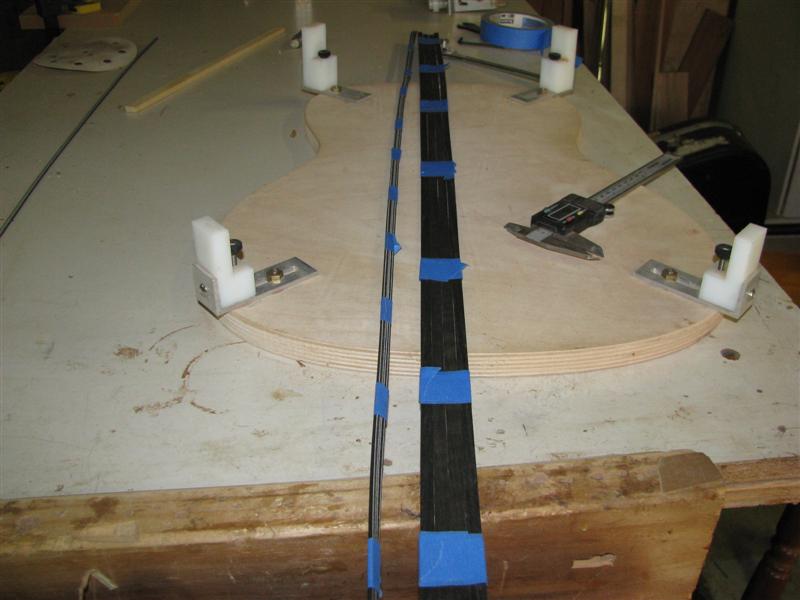
I didn't take any pics of the binding channel cutting because things usually get a bit stressful at this point and the camera is the last thing on my mind. Robbie O'Briens vids do it exactly how I do so we'll use them as a reference.
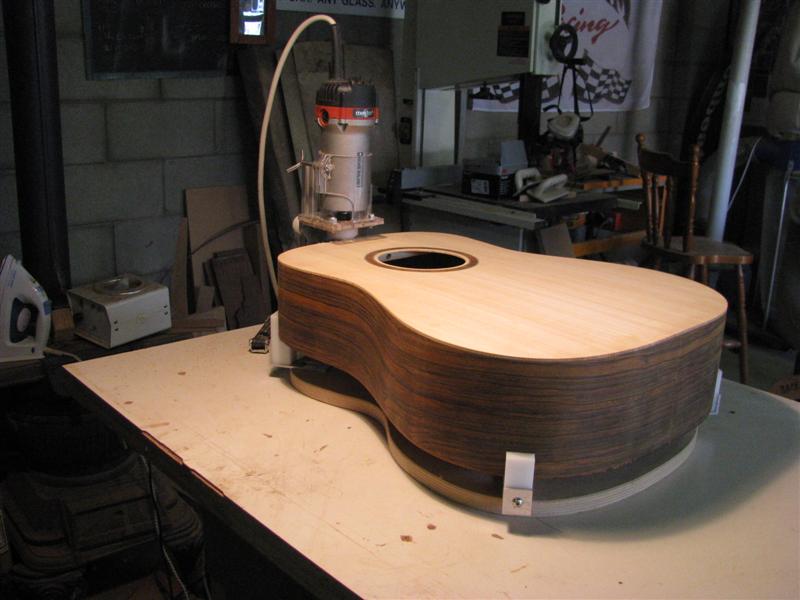
Here's a few pics of the finished product. One of my favorite parts of building is seeing the guitar in the white. It's here that you can see if your design elements are working harmoniously.
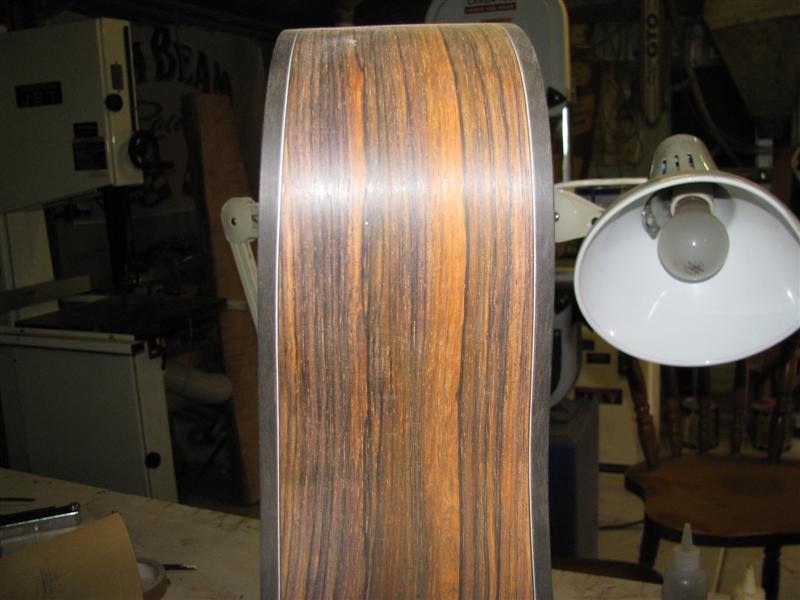
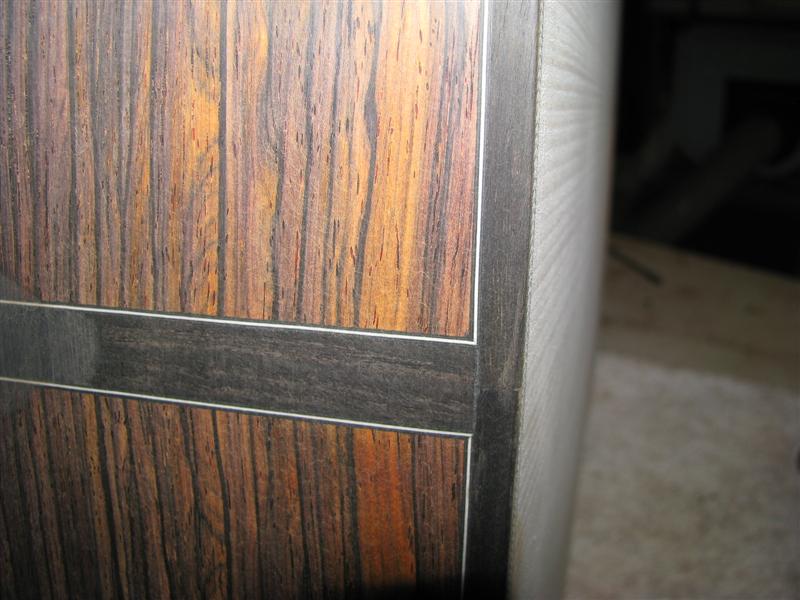
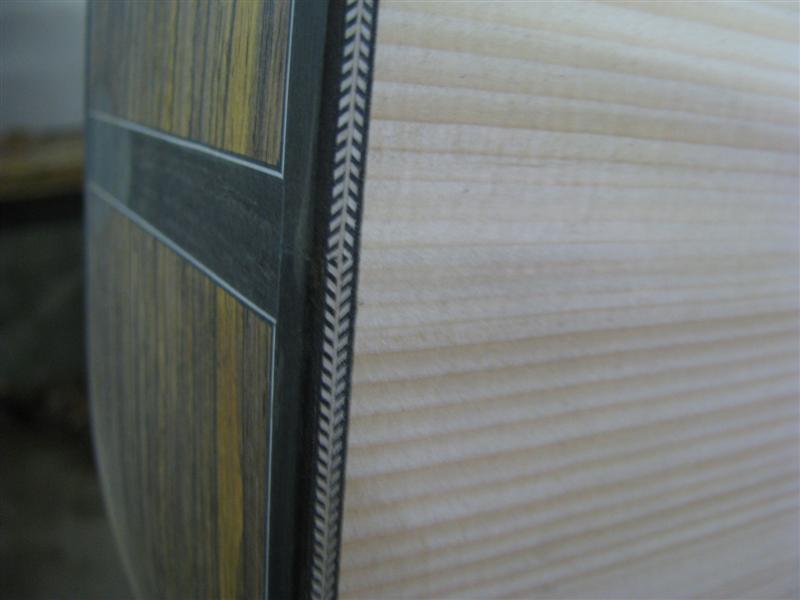
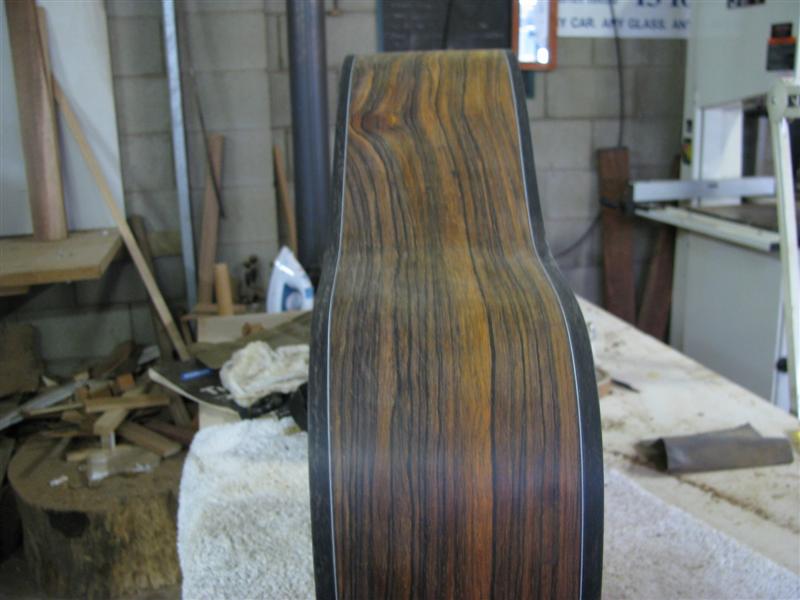
the next step is pore filling for which I use Z-Poxy. After Kim's reaction to this stuff I take a few more precautions which include respirator, gloves, and fan to blow fumes away.
I use an old credit card to mash the z-poxy into the pores on a 45 degree angle and then squeegee it of with the credit card. Then sand back with 220 grit. I'll probably re-apply it 2 or 3 times before I'm satisfied the pores are completely filled. Hesh has done a great tutorial on using Z-poxy over at the OLF. You can find it here
Hesh's Z-Poxy Tutorial
I do it exactly as he describes.
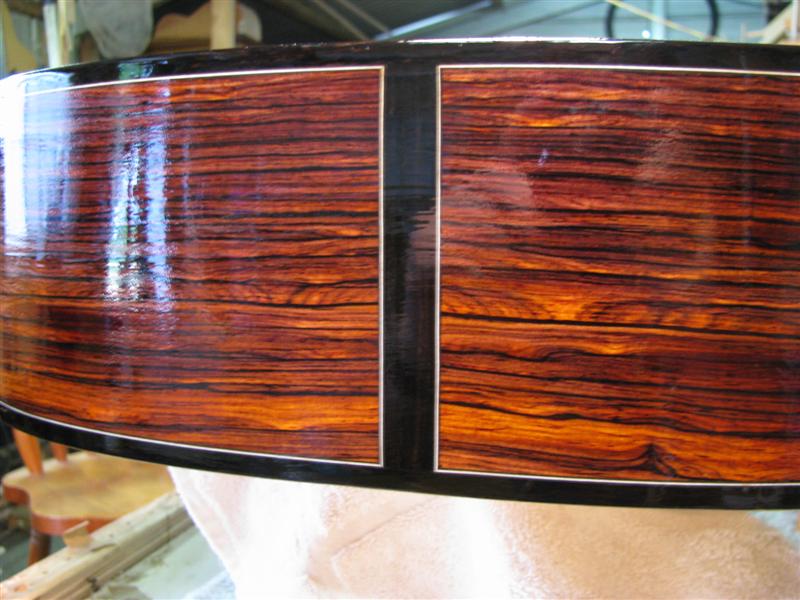
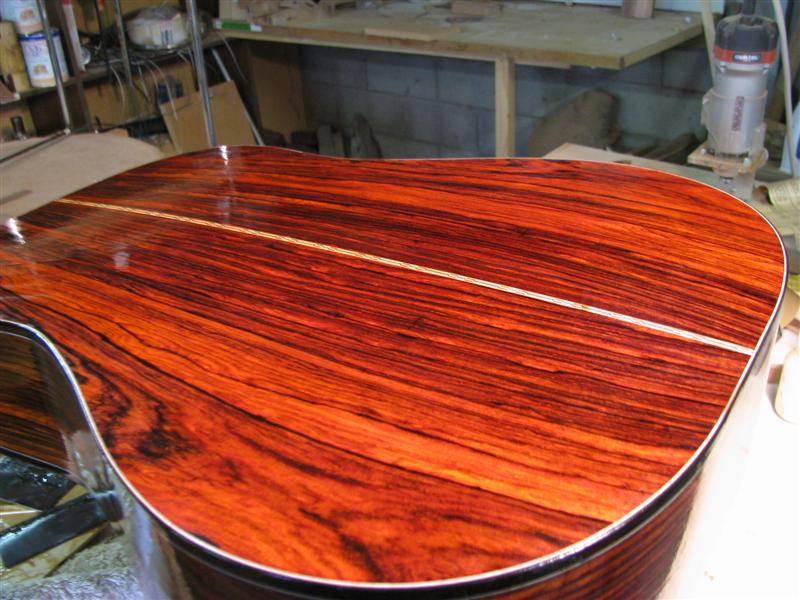
The Z-poxy really pops the grain. this Coco is going to look really nice under finish.
I know a few of you bought some of this in the group buy. You won't be disappointed working with it.
